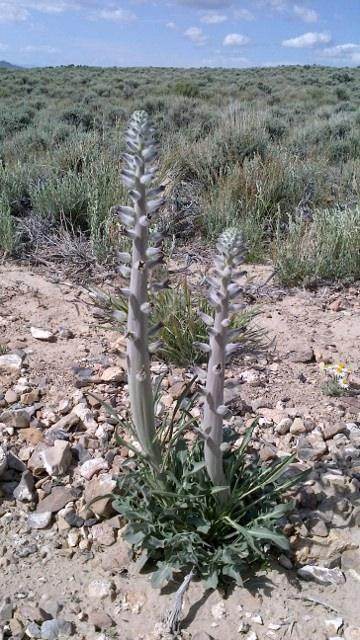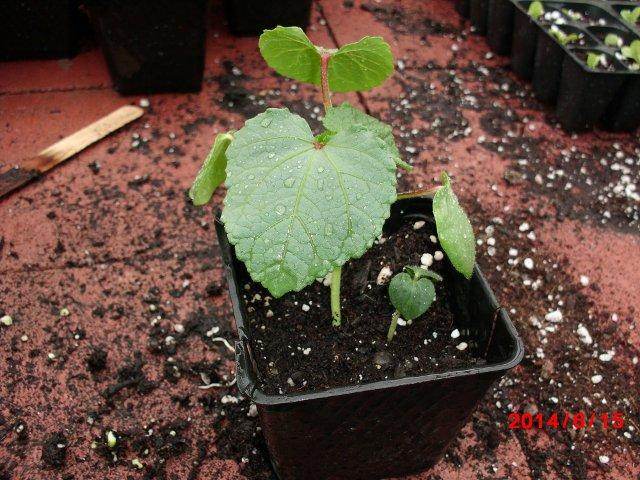
 2
2




-Direct seeding trials using rain as the sole source of moisture;
-Searches for elite specimens (those that, for instance, hold onto the ripe seed, that have bigger seed, and that best survive harsh conditions);
-Trials on various sites (from the most favorable locations to moving sand dunes);
-Analyses of food value (physical, chemical, and nutritional) as well as of the foods prepared from them; and
-Multiplication of seeds or other planting materials for distribution to nomads, farmers, governments, and researchers.







 1
1





 9
9





 3
3




I think having land and not ruining it is the most beautiful art that anybody could ever want to own. - warhol

 4
4




R Ranson wrote:Here's an idea that's been floating around my head. If (most) grain crops were selected from wild grasses to become one of the largest staple food of humanity, is it possible that modern humans might be able to do the same? If so, how would one go about it? More importantly, is it a good idea, and what are the risks of trying it?


 3
3




Here's an idea that's been floating around my head. If (most) grain crops were selected from wild grasses to become one of the largest staple food of humanity, is it possible that modern humans might be able to do the same? If so, how would one go about it? More importantly, is it a good idea, and what are the risks of trying it?
List of Bryant RedHawk's Epic Soil Series Threads We love visitors, that's why we live in a secluded cabin deep in the woods. "Buzzard's Roost (Asnikiye Heca) Farm." Promoting permaculture to save our planet.

 5
5




 3
3























 4
4




List of Bryant RedHawk's Epic Soil Series Threads We love visitors, that's why we live in a secluded cabin deep in the woods. "Buzzard's Roost (Asnikiye Heca) Farm." Promoting permaculture to save our planet.



























List of Bryant RedHawk's Epic Soil Series Threads We love visitors, that's why we live in a secluded cabin deep in the woods. "Buzzard's Roost (Asnikiye Heca) Farm." Promoting permaculture to save our planet.

 9
9




R Ranson wrote:I harvested a nice bucket full, but got frustrated because I couldn't get the hulls off.




![Filename: CDC03449-1F44-496C-8C56-376834355B84.jpeg
Description: [Thumbnail for CDC03449-1F44-496C-8C56-376834355B84.jpeg]](/t/48400/a/73753/CDC03449-1F44-496C-8C56-376834355B84.jpeg)
Mandrake...takes on and holds the influence
of the devil more than other herbs because of its similarity
to a human. Whence, also, a person’s desires, whether good
or evil, are stirred up through it...
-Hildegard of Bingen, Physica

 4
4




 2
2




 1
1




Mandrake...takes on and holds the influence
of the devil more than other herbs because of its similarity
to a human. Whence, also, a person’s desires, whether good
or evil, are stirred up through it...
-Hildegard of Bingen, Physica
 3
3




 1
1




Alex Delashmit wrote:Hello, all I've been working on domesticating Native wild Rye species. Elymus Canadensis is one I've used for several years. Mostly testing its edibility. Elymus virginicus is another. I like it more than Canadensis. As it's easier to work with and has much larger seeds. The taste is decent. I think If I gather enough grain a sourdough could be possible. As the dough is a bit elastic when worked with.
Mandrake...takes on and holds the influence
of the devil more than other herbs because of its similarity
to a human. Whence, also, a person’s desires, whether good
or evil, are stirred up through it...
-Hildegard of Bingen, Physica
 1
1




Ryan M Miller wrote:
Alex Delashmit wrote:Hello, all I've been working on domesticating Native wild Rye species. Elymus Canadensis is one I've used for several years. Mostly testing its edibility. Elymus virginicus is another. I like it more than Canadensis. As it's easier to work with and has much larger seeds. The taste is decent. I think If I gather enough grain a sourdough could be possible. As the dough is a bit elastic when worked with.
Earlier this year, I gathered some seeds from a wild rye species (Elymus sp.). I think it's Canadian wild rye (Elymus canadensis), but it could also be virginia wild rye (Elymus virginicus) or Elymus villosus. The problem with this species is that the chaff clings firmly to the seeds so it cannot be easily rubbed off with bare hands. I have yet to try dehulling the grains with a rubber disk huller or an impact huller due to the high cost required to buy or build one.




Alex Delashmit wrote:
I have to peel the chaff off with my fingernails. Sometimes I find other smaller strains of Virginia wild rye where the chaff comes off easily.
Mandrake...takes on and holds the influence
of the devil more than other herbs because of its similarity
to a human. Whence, also, a person’s desires, whether good
or evil, are stirred up through it...
-Hildegard of Bingen, Physica
 1
1





|
Why is the word "abbreviation" so long? And this ad is so short?
The new permaculture playing cards kickstarter is now live!
https://www.kickstarter.com/projects/paulwheaton/garden-cards
|





